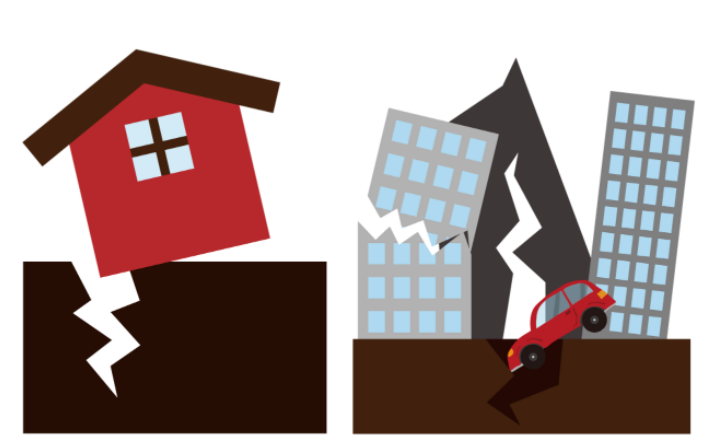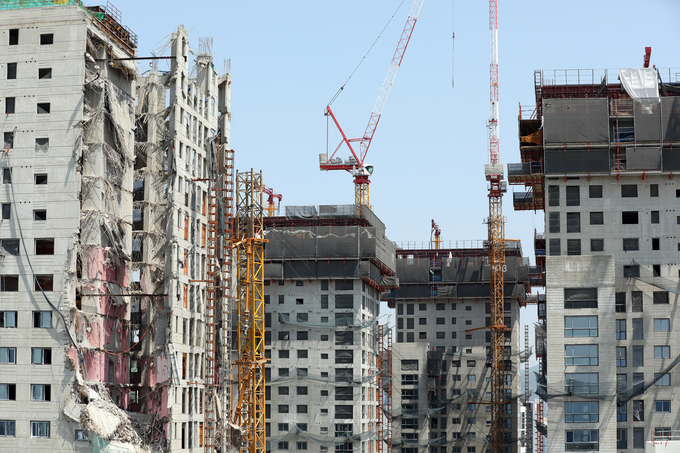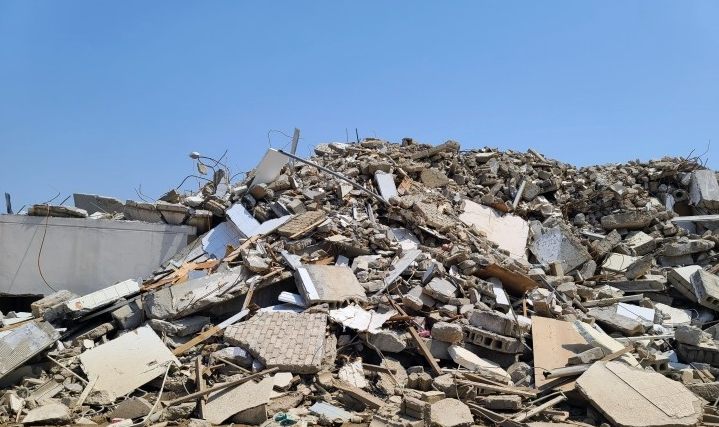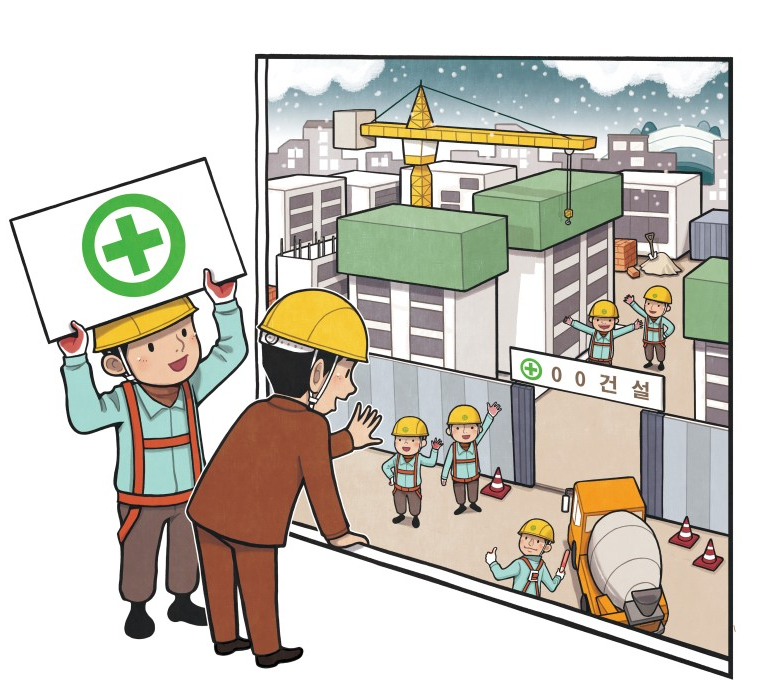 |
A series of building collapse disasters occurred in Gwangju. The building that should have disappeared, and the scene in a mess in the thick dust still remains in our heads as if it were yesterday. Someone ran to the scene of the accident crying, and someone was filled with sadness waiting for the news to be rescued. However, let's take a look at the progress and cause of the collapse disaster, which raises suspicions as the investigation progresses. And let's find out the reaction of society to this and pledge to prevent such unfortunate events from happening again
The collapse of a building in Hakdong, Gwangju
On June 9, 2021, a fifth floor building that was being demolished in Hak-dong, Gwangju, collapsed in the direction of the road next to the site, causing a disaster that hit the city bus. The accident killed nine people on the bus and caused eight serious injuries. Lee Se-gi, the son of a bus driver Lee, one of the eight seriously injured, conveyed his father's feelings in a telephone interview with the Munhwa Ilbo on June 11, 2021, saying, "When my father woke up for a while, he heard the news about the casualties for the first time, he’s very heartbroken" He then said, "His body is also in a very difficult state mentally," expressing the need for victim care. On June 11, 2021, the Ministry of Land, Infrastructure and Transport formed the "Central Building Accident Investigation Committee" to identify the cause of the incident, prevent recurrence of similar accidents, and prepare countermeasures.
 |
On July 29, 2021, the Gwangju Metropolitan Police Agency's violent crime investigation team sent nine people directly responsible for the Hakdong disaster on charges of occupational negligence and homicide based on the investigation by the Central Building Accident Investigation Committee. The accident of occupational negligence corresponds to a case where the employee fails to predict or avoid the occurrence of a result by neglecting his obligation. In other words, it is a crime that leads to injury or death of another person by unintentional mistake while working. Of the nine people charged with occupational negligence and homicide, all eight were managers or representatives of partner companies, except for the site director of the construction company. Punishment for occupational negligence is imprisonment for up to five years or a fine of up to KRW 20 million, but construction companies are fined KRW 14.3 million and related companies are fined KRW 18.9 million.
In other words, the construction company that led the collapse work failed to properly hold the legal responsibility and handed over most of the legal responsibility to the partners who received the work. In addition, citizens protested against only simple fines without criminal penalties. In an interview with Gwangju KBC on August 27, 2021, Lee Jine, one of the bereaved families of the casualties, said, "The truth and punishment of those involved are the biggest things we want." He then burst into anger, saying, "I hope government can create a place to punish those who are guilty." In the same interview, Lee Ki-hoon, executive chairman of the Hakdong Disaster Countermeasures Committee, said, "The disaster itself is very unfortunate, and the fact that the truth or the punishment of the person in charge is not being carried out is increasing." In addition, he emphasized the need to enact the law, saying, "I think related laws have been enacted quickly and institutional follow-up measures to prevent recurrence should be completed."
The collapse of I-Park apartment in Hwajeong-dong, Gwangju
 |
On January 11, 2022, seven months after the Hakdong disaster, the collapse disaster that collapsed on the outer walls of 23 to 34 floors of one building recurred at the I-Park apartment construction site in Hwajeong-dong, Gwangju. At the time of the accident, three injured and six buried victims occurred at the construction site. On February 8, 2022, the last buried victim was found, and all six buried victims were found unfortunately dead. At the time of the search for the missing person, the fire authorities had to simultaneously carry out the search and installation of supports in the upper floor where there was a risk of collapse, so it took more time to rescue.
The HDC Hyundai construction company Industrial Development is the same as the construction company in the aforementioned building collapse disaster in Hak-dong, Gwangju, which shocked the public. Regarding this, the Gwangju headquarters of the Korean Confederation of Trade Unions issued a statement on January 12, 2022, pointing out, "This accident is also a second disaster caused by insensitivity of management agencies responsible for generating, managing, and supervising construction companies rather than life and safety." He then demanded, "In the event of a disaster, the management manager can be punished and a law should be enacted again to clarify each responsibility and role throughout the construction site."
On the same day, the CEO of the construction company said, "I deeply apologize to the victims and their families, also Gwangju citizens who were damaged by the unfortunate accident at the construction site." In addition, "I feel responsible for an accident that cannot happen. I'm so ashamed" On January 14, the police and the Ministry of Labor confiscated and searched a total of 10 construction companies and related companies, and on January 17, the prosecution indicted 16 officials for occupational negligence and violation of the Building Act. This is still in progress, and the prosecution said it is searching for the case, identifying the cause, and progress, adding, "We will thoroughly investigate those responsible for the collapse to face corresponding punishment."
The cause of the two construction incidents conducted by the same company
 |
There are four main causes of such a disaster. There is an unreasonable construction schedule as the first reason. Concrete, the main material of the building, is slow to dry, so construction company have to leave enough time and work while hardening the concrete to dry. Such an action is called ‘concrete curing’, in other words ‘curing’. The curing action is that the liquid loses its fluidity due to physical changes such as drying and increases its strength, and only when this period is sufficient can concrete withstand impact and load. However, in the case of Hwajeong-dong, Gwangju, the construction company continued to stack layers before the concrete poured into the building dried up, and the required period was two weeks in six days. In other words, the concrete was not strong enough to speed up the construction schedule. In addition, the demolition work of Hak-dong, Gwangju did not follow the guidelines of the plan. The demolition plan said it would be demolished from the top of the five-story building. However, in order to speed up the construction schedule and reduce costs, cranes that can be demolished from the middle floor, which are relatively cheaper than cranes that can be demolished from the top, are used and demolished from the middle floor. As the middle floor fell out, the lower floor of the building collapsed without enduring the weight of the upper floor. When demolishing from the middle floor inevitably, it is necessary to install a support to support the upper floor, but even this was not present at the scene of the incident. In other words, a disaster occurred due to excessive construction to shorten the construction schedule.
The second cause is illegal subcontracting. It is called subcontracting to entrust all or some part of a person's duties to another person again. Such subcontracting is not originally illegal, but the construction company in the case executed two things that violate the law. First, the contractor in the above case reduced the construction cost to one-seventh by giving "subcontractors" that were not allowed by law to save money. In other words, the work that had to be done at 280,000 won per pyeong was reduced to 40,000 won per pyeong. As the construction was carried out at such a low cost, the necessary equipment was borrowed less and proceeded poorly. second, in order to save construction costs, there is something that has been entrusted to a company without expertise. The company in charge of the construction entrusted the concrete pouring work to Company A, but Company A expediently handed over the work to Company B, which is not specialized in this work. In other words, Company A tried to benefit from entrusting its work to Company B, which has a lower construction cost, so less professional labor was put into the two disaster sites.
The third cause is the absence of the role of a supervisor. The construction site must have expertise, technology, and experience in the construction process, and there must be a supervisor who can guide the construction method based on this. When construction is carried out using construction equipment such as an excavator, it is necessary to check whether the site is safe from time to time and to check whether it has been constructed according to the contents of the documents. However, there was no supervisor at the time of the two accidents. In other words, there is no professional manpower with supervisory authority to manage safety and environment.
The last cause was ignoring the complaint that debris was falling. Even before the accident, residents in the area where the accident occurred steadily filed complaints, saying that concrete debris was falling from the construction site. However, the district office responded passively, saying, "It is hard to say that it is from the construction site." Even those in charge of safety management at the site heard complaints and did not take any action. In other words, it can be said that although the result of collapse appeared, it was not able to respond due to the lack of manpower and supervisors with poor expertise mentioned above. On February 5, the "Hwajeong I-Park Damage Countermeasure Committee" visited Seo-gu Office, Seobu Police Station, Gwangju City Hall, and the Democratic Party one after another at a press conference and shouted, "It is dangerous," adding, "But there was no answer back. This problem turned out to be a disaster and this collapse, he said. Hong Seok-sun, chairman of the Hwajeong I-Park Damage Countermeasure Committee, appealed, "If anyone had been interested in our damage at least once, this disaster would not have occurred," and the two disasters were "predicted talent" due to the disregard of civil complaints.
How to deal with the two incidents
As a follow-up measure to the Hakdong disaster, Gwangju Metropolitan City announced on January 5, 2022 that it would produce and distribute its own manual for safety management of building dismantling work. The manual contains the preparation and review method of the dismantling plan, and the minimum standards that managers must comply with, and should be applied to the dismantling work submitted to Gwangju from February. The revision of the building was passed at a plenary session of the National Assembly's Land, Infrastructure and Transport Committee on January 7, 2022 as voices calling for legislation to strengthen punishment and prevent recurrence despite Gwangju Metropolitan City's own movement. The building amendment is also called the "Hakdong Disaster Prevention Act" and includes a punishment clause that requires a fine of up to 20 million won for working without permission, including mandatory on-site inspections of buildings. It was predicted that this could be handled at the plenary session of the National Assembly on January 11, 2022.
Citizens, who felt frustrated with the investigation after the Hwajeong-dong disaster, took action on January 20, 2022 by forming a "Hwajeong-dong Disaster Citizens' Countermeasure Committee" consisting of about 40 civic groups. In a statement, the Citizens' Countermeasure Committee in Hwajeong-dong said, "We will no longer tolerate a barbaric society where citizens and workers are driven to danger and dying because of profits," adding, "We will fight in solidarity with the Victim's Family Council." And as citizens' voices calling for the government's movement increased, President Moon Jae In instructed on January 22, 2022, "Strengthen government support and consult with local governments to devise a plan for the government to play a leading role in the overall accident settlement process"
Accordingly, on January 24, 2022, the Central Disaster Management Headquarters was formed in which the Ministry of Employment and Labor, the Ministry of Public Administration and Security, the Ministry of Land, Infrastructure and Transport, and the National Fire Agency participated. The Central Disaster Management Headquarters has emerged to increase work efficiency than before because it collectively controls existing accident response organizations scattered by institutions. Following the government's move, Gwangju also formed its own "Safety TF Team" on January 26, 2022 and held its first meeting to show its willingness to respond to accidents. TF stands for "Task Fore" and refers to a special project team gathered to achieve the performance of a special mission. Lim Taek, head of Gwangju Dong-gu District Office, one of the members of the safety TF team, said, "We have formed a TF team to relieve residents' anxiety and ensure safety in the apartment structure caused by the recent collapse of Hwajeong-dong apartments."
A similar incident in Korea
 |
Due to the causes discussed above, there have been several disasters in Korea. On the morning of October 21, 1994, Seongsu Bridge, which connects Seongdong-gu and Gangnam-gu in Seoul, collapsed, and 49 citizens who were going to work or school at the time fell to the Han River, and 32 of them died. Due to this collapse disaster, poor construction and lack of safety inspections that were prevalent in the construction field were intensively exposed. In addition, with this opportunity, the overall issue of corruption in Korean society began to be raised. Efforts to reduce the practice of corruption are made at the level of government, academia, and civil society organizations, providing opportunities for Korean society to become more transparent and healthy. Measures for poor construction were actively promoted, but another collapse disaster occurred less than a year later due to insufficient establishment of measures.
On the afternoon of June 29, 1995, Sampung Department Store located in Seocho-dong, Seoul, suddenly collapsed, killing or injuring more than 1,000 employees and customers. Sampung Department Store showed signs of collapse on the morning of June 29, 1995, but management decided to carry out excessive repair work as it continued to operate due to concerns over the loss of operating profit. In addition, Sampung Department Store frequently carried out excessive expansion work even after its completion in 1989. In the wake of this accident, a safety evaluation of buildings was conducted, and 119 Central Rescue Team was installed to secure the emergency rescue system.
Disaster such as building collapse has occurred in recent years before it occurred in Gwangju. On the afternoon of June 3, 2018, a fourth floor commercial building in Yongsan, Seoul, collapsed. At the time of the incident, the restaurant was closed because it was Sunday, and most of the residents were out, so fortunately, there were no deaths other than one injured. On the day of the incident, the fire authorities said, "The specific cause of the collapse is not yet known because the building suddenly collapsed."
However, Lee, a tenant who runs a restaurant on the first floor of the building where the incident occurred, said in an interview with the Chosun Ilbo, "The walls of the building have bulging since last month." In addition, he said, "Recently, the front door was not properly closed, so I called a repairman, and he said, 'I think the building is coming down.'" Another tenant, Jeong, also said, "We found a crack in the building last month and filed a complaint with Yongsan-gu Office, but there was no action." In response, he appealed, "I sent a picture of the building to the district office by e-mail, but afterwards, he said he would look around the site and there was no contact." Residents burst into anger or shed tears, saying that many casualties would have occurred on weekdays. Like the two Gwangju disasters that occurred this time, the disasters examined earlier ignored the greatness of the collapse and were caused by excessive construction. It is also evaluated as a man-made disaster in that it was able to minimize damage by preventing it in advance.
Reaction to the incident
On February 5, 2022, yellow ribbons gathered citizens' hearts were hung at the site of the collapse in Hwajeong-dong, Gwangju. The yellow ribbon, which has been hung one by one since January 16, 2022, has filled one side of the wire mesh. The yellow ribbon contains messages such as "I won't forget" and "I'll be interested until the end." Kim Dong-gyu, a resident of Hwajeong-dong, sighed, saying, "I think I visited the scene 3-2 times because I felt sorry for watching TV," adding, "How painful must it be for victim family" Another resident, Lee Seung-hyun, said, "I hope there will be no more man-made disaster at the construction site." Some residents responded in various ways, saying, "The construction company is bad," "Can this happen in the middle of Gwangju," and "The family is suffering," but generally showed a cynical atmosphere. This is because there is a great deal of anger in Korean society, where collapse disasters continue to occur, insincere responses, and construction companies that responded with a single apology.
As citizens continued to express their anger by petitioning or protesting, the National Assembly passed the Act on the Punishment of Critical Disaster Companies, which has been discussed since last year. The Act on the Punishment of Critical Disaster Businesses imposes a business owner or management manager in prison for more than one year or a fine of up to KRW 1 billion if a worker dies in an industrial accident or accident in a public facility frequently used by people, including demolition sites. There is a regulation that punishes the person in charge of the accident when a general citizen is injured even before the Punishment of Critical Disaster Companies Act exists. However, in January 2021, the National Assembly created the Severe Disaster Enterprise Punishment Act because the law before the Severe Disaster Enterprise Punishment Act is only possible if public facilities such as hospitals and baths are used, and disasters at demolition sites are not applicable.
The Severe Disaster Enterprise Punishment Act includes 24 "vocational diseases" including respiratory diseases, heatstroke, and cerebral hemorrhage that could cause overwork, and provisions that can be punished if confirmed. However, this Gwangju disaster is not applicable because the Act on the Punishment of Critical Disaster Companies will be applied step by step depending on the size of the workplace from January 27, 2022. Although it is difficult to apply the punishment law before the enforcement as an exception only to this disaster, some say that the corporate punishment law for serious disasters should be supplemented to prevent further disasters. Discussions have begun to change the fact that the law does not apply to workplaces with less than five employees of the Corporate Punishment Act, and to add provisions focusing not only on punishment but also on safety prevention.
Subsequently, the government said it would create a new bill, the "Special Act on Construction Safety," to prevent accidents. Unlike the Severe Disaster Punishment Act, which punishes only construction site managers, the Special Construction Safety Act calls for responsibility for safety management.
 |
You should set an example by punishing what someone did wrong and praising what someone did well. So far, we have been lucky to avoid misfortune or else, we could have experienced something terrible. The two collapse disasters in Gwangju, Sampung Department Store, and Seongsu Bridge will not be caused by bad luck. Construction is also directly related to human life, so construction company have to build it with responsibility. Therefore, we must remember the pain of the victims and strive to enact laws to prevent damage. When can we see a transparent society without corruption and a country where each other is responsible for each other.
고혜빈 raccoon1206@naver.com
<저작권자 © 인하프레스, 무단 전재 및 재배포 금지>

![[보도] 제43대 총학생회 후보자 공청회 개최돼](/news/photo/202404/11686_5015_2626.png) [보도] 제43대 총학생회 후보자 공청회 개최돼
[보도] 제43대 총학생회 후보자 공청회 개최돼
![[보도] 제43대 총학생회 후보자 공청회 개최돼](/news/thumbnail/202404/11686_5015_2626_v150.jpg)
![[보도] 총학생회장 선거 열려···학생사회 대표자는?](/news/thumbnail/202403/11668_5014_266_v150.jpg)
![[보도] 무전공·계열제 논의···학생은 어디에?](/news/thumbnail/202403/11666_5011_2238_v150.jpg)
![[보도] 인하 70돌, 다양한 행사 이어져](/news/thumbnail/202403/11663_5009_165_v150.jpg)
